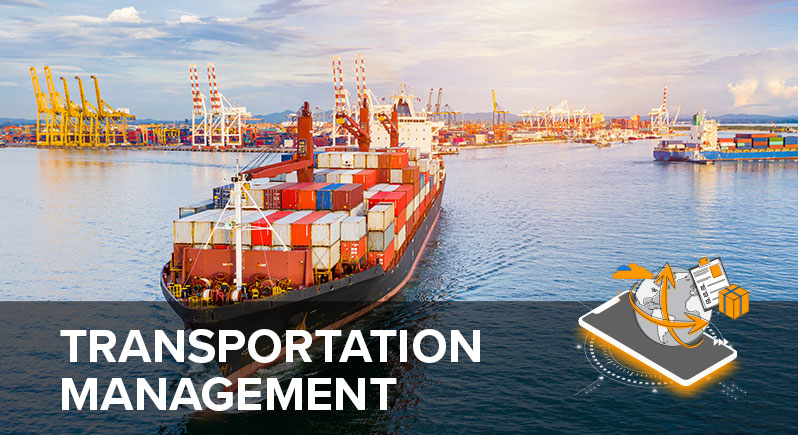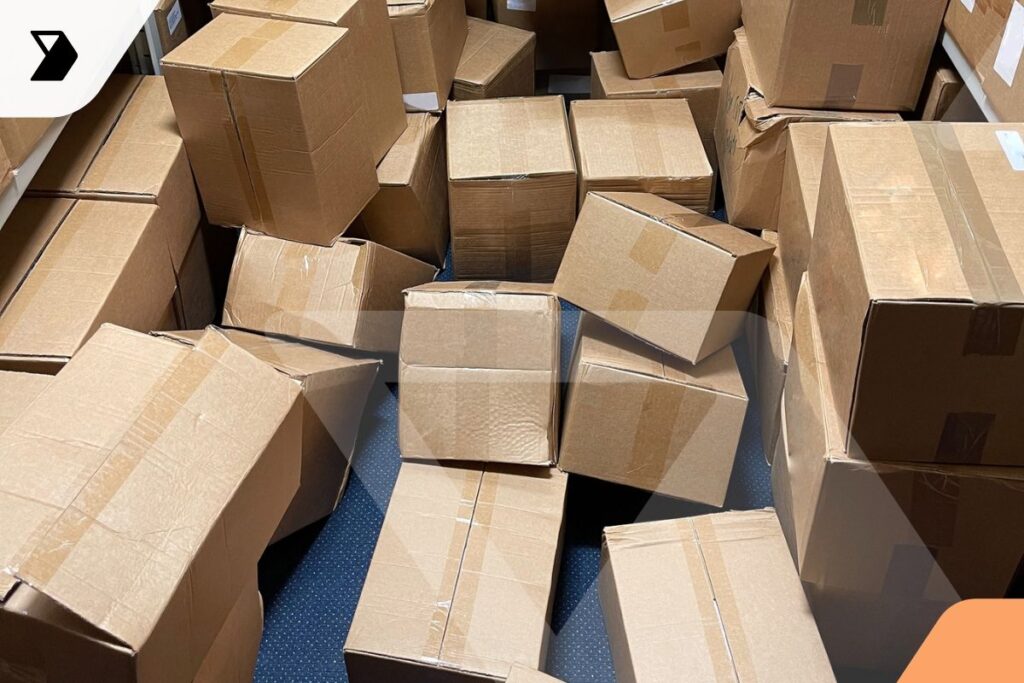CTPAT Benefits: How Being Certified Can Help Your Company
Today we're covering the benefits of the Customs-Trade Partnership Against Terrorism (CTPAT) program.
Ready to transform your supply chain?

The U.S. Customs and Border Patrol (CBP) started CTPAT as a program focused on improving the security of companies’ supply chains with regard to international terrorism.

In a nutshell, if you’ve ever gone to Disney World, CTPAT is a lot like getting a FastPass+.
Supply, Demand, and Getting to the Front of the Line
The Disney FastPass+ allows you to skip to the front of the line on three rides per day. Oh sure, you’ll still wait in line for hours on all the other rides. But for three glorious rides, the FastPass+ turns you into a VIP.
If you fly a lot, you might think FastPass+ sounds like TSA PreCheck. Just like at Disney World, the TSA PreCheck lets you skip the gruesome wait. But it also means you can keep your shoes and belt on, and you don’t need to remove your laptop from its case.
Savvy international travelers step up the VIP treatment with a program called Global Entry. Global Entry offers the same perks as TSA PreCheck but extends them to international flights. So the next time you’re standing in line at the gate, sweating bullets about missing your flight, remember this: U.S. Customs and Border Patrol recognizes that the check-in process is a true bottleneck. Both TSA PreCheck and Global Entry are proof of that. (And PreCheck costs only $85 for a five-year membership, while Global Entry costs $100 for a five-year membership.) That’s better than a day at Disney, right?
More Like “Ports of Long Delays”
That being said, these aren’t the only border entry programs the government has developed. And the airports aren’t the only international bottleneck. Thus, the CTPAT program is intended to reduce delays at ports of entry.
How bad are the delays at these ports?
In a recent interview, Echo Global Logistics CEO Doug Waggoner underscored the issue plaguing the international supply chain.
He explained, “There is a lot of inventory catch up that needs to happen, given the number of vessels waiting to get into the San Pedro Bay at the Ports of Los Angeles and Long Beach. That represents a lot of backlogged freight.”
What does it mean to say the ports are backlogged? According to Port of Los Angeles executive director Gene Seroka in a report at supplychaindive.com, when ports are 95% full, that means vessels must drop anchor in San Pedro Bay while they wait in line. For example, in January 2021, wait times had increased to 7.3 days per ship. That’s up from 4.6 days per ship in December 2020. That’s quite the spike!
What About Land Borders?
It isn’t much prettier when we look at land borders.
In January 2021, the U.S. Department of Homeland Security (DHS) announced it would begin scanning 100% of trucks enter the United States from Mexico. Before that, only 15% of trucks got scanned on entry to the United States. One estimate suggests border congestion will cause carriers a million dollars a day. That’s a lot of funnel cakes at Epcot!
What else do the experts say about this problem?
“The cost across the supply chain is very heavy, millions of dollars per vessel per day, when they sit not doing their business.” —Gene Seroka, executive director, Port of Los Angeles
“Freight congestion caused by a shift in customs resources to handle a surge [in] immigration is already costing U.S. importers millions of dollars each day.” —William Cassidy, senior editor for JOC.com, a source of news analysis about trade and container shipping
Now that you have a sense of the delays and costs, let’s look at how getting CTPAT certified can help your organization.
What Are the Primary Benefits to CTPAT Certification?
Companies that have supply chains meeting the CTPAT requirements get fewer inspections at U.S. borders. This frees up customs officials to focus on riskier cargo. Therefore, getting unloaded faster benefits your bottom line. Beyond that, the U.S. Customs and Border Protection website suggests CTPAT certification has many other benefits:
- Shorter wait times at borders.
- Front-of-the-line inspections.
- Reduced number of CBP examinations.
- Possible exemption from stratified exams (where customs officers count every carton to make sure there’s a precise match with the BOL).
- Access to the Free and Secure Trade (FAST) lanes for low-risk shipments at land borders.
But wait . . . there’s more.
Additional Soft Benefits of CTPAT Certification
Here’s how else you can expect to benefit from getting certified.
- Assignment of a CBP supply chain security specialist to your company.
- Benefit of being recognized as a trusted trade partner by foreign customs administrations that have signed mutual recognition agreements with the United States.
- Eligibility for other U.S. government pilot programs, including the Food and Drug Administration’s Secure Supply Chain program.
- Getting priority to resume business after a natural disaster or terrorist attack.
- Importer eligibility to take part in the Importer Self-Assessment program (ISA).
- Access to the CTPAT web-based portal system and a library of useful training materials.
- Priority consideration at CBP’s industry-focused Centers of Excellence and Expertise.
Why has the government spent so much time, effort, and money on this program? Read on to find out.
What’s in It for the CBP?
As alluded to earlier, the companies that enroll in CTPAT aren’t the only ones to benefit from getting enrolled in the program. The CBP also gains visibility into the supply chain. The CTPAT enrollment process provides the participant company and the CBP an opportunity to build a stronger partnership.
The face-to-face CTPAT audit and validation process includes discussion regarding best practices for international supply chain security. Subsequently, both parties have the opportunity during CTPAT enrollment to discuss and develop solutions that address potential vulnerabilities.
In summary, like the TSA PreCheck enrollment process, the face-to-face nature of the CTPAT validation encourages partnerships. When everyone works together to understand the role we all play in securing our borders against international terrorism, that makes everyone safer.
One “Best Practice” to Consider Ahead of CTPAT
The CTPAT audit and validation process is thorough, but it doesn’t have to be burdensome. One best practice to consider ahead of your CTPAT enrollment is to adopt digitized document software.
Bear in mind that CBP calls its 11,000+ CTPAT members the “elite.” It would follow that the CBP isn’t taking enrollment lightly.
The CBP is simply trying to enroll quality businesses that it can trust. So the message is simple: Elite companies are improving their technology. In turn, digitized documents are becoming the new standard for operational excellence. It’s worth noting that the leader in this space is the Silicon Valley company Vector.
Vector is in a position to help companies streamline the CTPAT process by helping companies digitize documents related to supply chain security processes and procedures. This aligns with what CTPAT is looking for in a partner.
In reality, digitized document software like Vector’s streamlines workflows for everyone up and down the org chart. Truckers. Managers. Back office. C-suite. Vector also integrates with dozens of other TMS, DMS, and WMS systems. The bottom line is that digitized workflows provide more visibility. Thus, digitized materials are more secure than paper-based procedures.
Trickle-Down Effects
“The spike in imports is unprecedented in scale, breaking new records on a monthly basis.” —Gene Seroka
As we’ve see today, the ports of Los Angeles and Long Beach are backed up, and so are the land borders. The trickle-down effects of backed-up ports show up throughout the supply chain. Delays in ocean transport and delivery result in container shortages. The U.S. labor market is a bit strained, by most accounts. Also, there are shortages in truckers, port workers, and labor personnel nationwide.
As such, LinkedIn lists front-line e-commerce worker (a role that includes driver, packager, and supply chain professional) as the highest-demand job in the United States.
In turn, this bottleneck could turn into higher prices on the market. And then those price increases have traditionally been the driver to outsource even more offshore.
But back home, that outsourcing has left our manufacturing ability inefficient. Indeed, in my manufacturing circles, the supply chain folks I talk with have described this situation as being like a tsunami.
Like all storms, this too shall pass. But going forward, it’s clear that the supply chain can be streamlined with the help of cutting-edge tech. Vector’s digitized documents are a step into the future. Stand back and look at the global supply chain. This becomes abundantly clear, perhaps as never before: It’s a small world after all.
And of course, get that FastPass+!
This post was written by Brian Deines. Brian believes that every day is a referendum on a brand’s relevance, and he’s excited to bring that kind of thinking to the world of modern manufacturing and logistics. He deploys a full-stack of business development, sales, and marketing tools built through years of work in the logistics, packaging, and tier-1 part supply industries serving a customer base comprised of Fortune 1000 OEMs.
Subscribe to stay updated on Vector and logistics trends
Continue reading
Ready to transform your supply chain?
Increase efficiency and productivity. Say goodbye to delays, handwriting errors, and time-intensive manual data entry.




